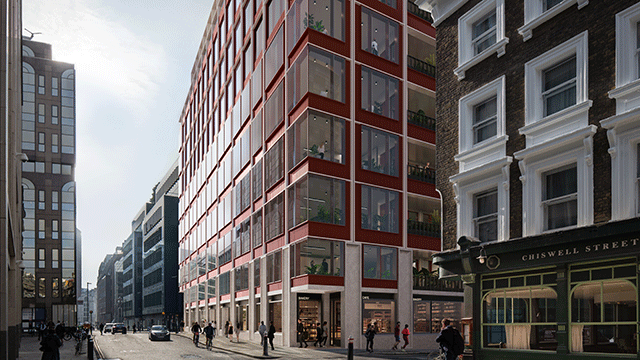Neighbourhood area – Designation – Section 61G of Town and Country planning Act 1990 – Localism Act 2011 – Appellants applying to respondent council for designation as neighbourhood forum for neighbourhood area including two strategic development sites – Respondents making designation in respect of smaller area excluding the two sites – Whether respondents erring as to scope of discretion under section 61G – Whether decision contrary to purpose of 2011 Act – Whether respondents failing to take character of area into account – Appeal dismissed
In April 2012, the first appellant, a local residents’ association, applied to the respondent council to be designated as a neighbourhood forum for a specified neighbourhood area, pursuant to the new provisions inserted into the Town and Country Planning Act 1990 by the Localism Act 2011, for the purpose of participating in the process of making neighbourhood development orders and development plans. The neighbourhood area for which it sought designation included the Daws Hill residential community on the southern edge of High Wycombe, Buckinghamshire, plus two adjacent brownfield sites identified in the respondents’ adopted core strategy as strategic sites for development.
One of those sites was the subject of an outline planning permission for a mixed-use development; it was anticipated that the second interested party, which owned the other site, would also seek planning permission for development. In September 2012, the respondents made a decision, under section 61G of the 1990 Act, to designate the first appellant as a neighbourhood forum in respect of a smaller area than that for which it had applied, excluded the two strategic sites. The respondents considered that the development of those sites would impact on a greater area than the immediate neighbourhood such that a referendum over a wide area would be needed; moreover, given the considerable time and cost involved in developing a neighbourhood plan, and the impossibility of preventing the submission of planning applications for the two sites in the meantime, it was likely that a neighbourhood plan would be overtaken by events.
The appellants’ claim for judicial review of that decision was dismissed in the court below. The judge rejected the appellants’ contention that the respondents’ decision frustrated the aims of the 2011 Act. He held that section 61G(5) conferred a wide discretion to be exercised having regard to the factual and policy matrix that existed at the time the decision was taken, and that the factors taken into account by the respondents fell within the ambit of that broad discretion: see [2013] EWHC 513 (Admin); [2013] PLSCS 75.
The appellants appealed. They raised a new argument that the respondent’s discretion under section 61G(5), to decide what was an appropriate area to be designated as a neighbourhood area, did not involve a decision as to whether a given area should or should not be designated as a neighbourhood area but was instead confined to deciding within which neighbourhood area any given site was to be included.
Held: The appeal was dismissed.
(1) The language of section 61G did not support the existence of a limitation on the section 61G(5) discretion such as that suggested by the appellants. Both section 61G(1) and (5) described the designation function as a power, not a duty. On the face of it, a power given to a local planning authority to decide whether a specified area was “an appropriate area” to be designated as a neighbourhood area necessarily conferred a broad discretion. The designation of an area as a neighbourhood area was not an end in itself. The purpose of designation was to define the area within which a neighbourhood forum (outside the area of a parish council) was authorised to exercise certain planning powers, such as the making of a neighbourhood plan and/or a neighbourhood development order. When determining the issue of appropriateness, it might therefore be necessary to have regard to a wide range of planning considerations.
If the authority refused the application because it considered that the specified area was not an appropriate area to be designated as a neighbourhood area, then section 61G(5) did not require the power to be exercised so as to secure that all of that area formed part of an area that was, or was to be, designated as a neighbourhood area. Had parliament intended that the local planning authority should simply decide within which designated neighbourhood area any specified area should be included, it would have required the power of designation to be exercised so as to secure that all, and not “some or all” of the specified area formed part of a neighbourhood area. When imposing the duty on the manner in which the designation power was to exercised under subsection 61G(5), parliament had envisaged that a local planning authority might exercise the power so as to designate a smaller area as a neighbourhood area, leaving part or parts of the specified area outside any neighbourhood area.
(2) A decision to exclude certain land from the designated neighbourhood area could not be circumvented by repeat applications by other bodies, under section 61F, for designation as a neighbourhood forum in respect of the excluded area. Sections 61F and 61G were inextricably linked and had to be read together. A neighbourhood forum was an organisation or body that was authorised to act in relation to a neighbourhood area if it was designated by a local planning authority as a neighbourhood forum for that area. It was not possible to have a neighbourhood forum without its neighbourhood area. An authority was entitled to refuse an application for designation as a neighbourhood forum; the discretion conferred on a local planning authority by section 61F(5) provided that the authority “may”, rather than “must”, designate an organisation or body that met the statutory conditions. Since the only purpose of a designated neighbourhood area was to define the area within which a designated neighbourhood forum was authorised to act, an application for designation of a specified area as a neighbourhood area could have no continued life once an authority refused the applicant organisation or body’s application for designation as a neighbourhood forum. If a repeat application were made by an organisation or body that passed the capability threshold in section 61G(2)(a), in respect of an area that the local planning authority had previously considered was not an appropriate area to be designated as a neighbourhood area, then the local planning authority would be entitled to refuse the application for neighbourhood forum designation under section 61F(5), and that would dispose of the repeat application. If it did so, it could decline to determine the application for designation of the specified area as a neighbourhood area on the basis that an organisation or body whose application for neighbourhood forum designation had been refused was not a “relevant body” because it was no longer “capable of being designated as a neighbourhood forum”. That would confine the need to exercise the section 61G(5) power of designation to those cases such as the present, where the local planning authority did consider it appropriate to designate a neighbourhood forum, but did not think that the specified area was appropriate for designation as the neighbourhood area. In such a case, the local planning authority could exercise its power of designation so as to ensure that some of the specified area was designated as a neighbourhood area.
(2) Since the respondents had a discretion to decide whether a given area should or should not be designated as a neighbourhood area, and were not confined to deciding within which neighbourhood area the land was to be included, any decision as to appropriateness had to take into account the factual and policy matrix that existed in each individual case at the time that the decision was made. When exercising the discretion conferred by section 61G(5), the respondent had been entitled to have regard to that policy and factual matrix so as to exclude the two strategic sites from the designated neighbourhood area for reasons which all related to their strategic nature. The matters relief on by the respondent were not irrelevant considerations; nor did the respondents’ decision frustrate the purpose of the 2011 Act. Although the character of the area was also a relevant consideration, the respondents had not failed to have regard to it. The two strategic sites had been excluded from the designated neighbourhood area because they were two strategic sites where the planning process was very well advanced and not because they were in some way “out of character” with the remainder of the neighbourhood area.
Paul Stinchcombe QC and Lisa Busch (instructed by Leigh Day & Co) appeared for the appellants; Suzanne Ornsby QC and Isabella Tafur (instructed by the legal department of Wycombe District Council) appeared for the respondents; Morag Ellis QC and Stephanie Knowles (instructed by Berwin Leighton Paisner LLP) appeared for the second interested party; the first interested party, the secretary of state for communities and local government, did not appear and was not represented.
Sally Dobson, barrister






